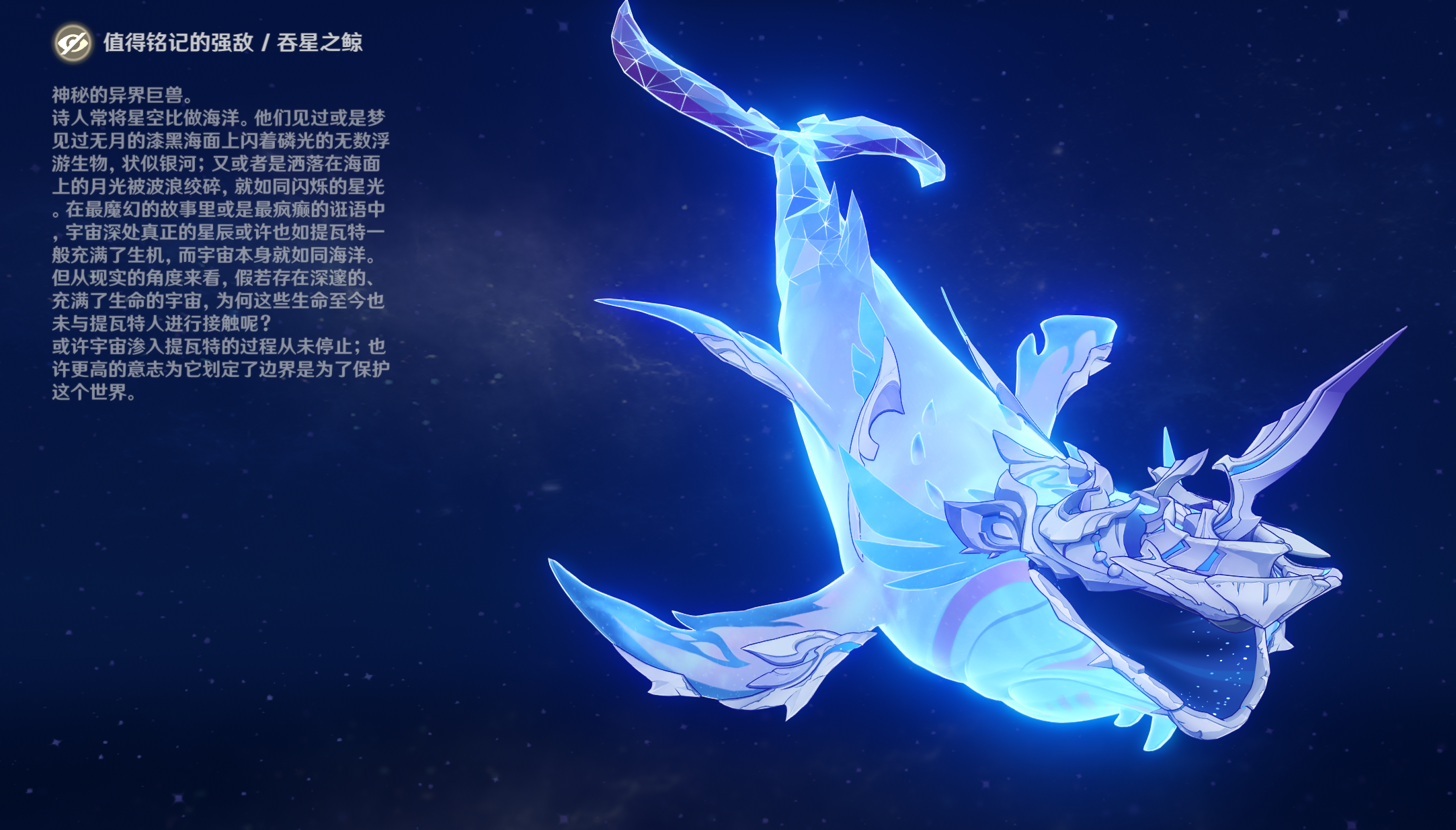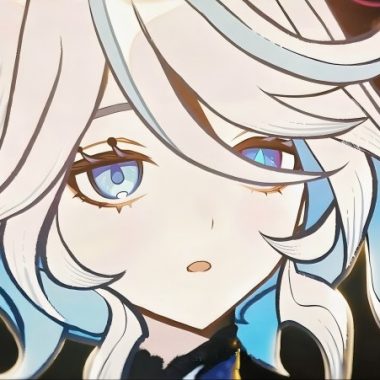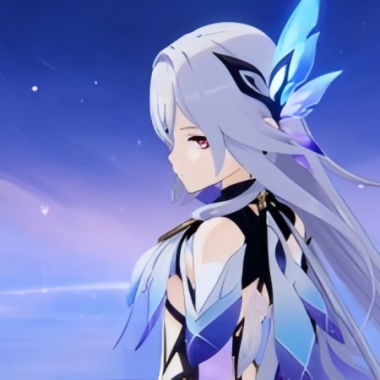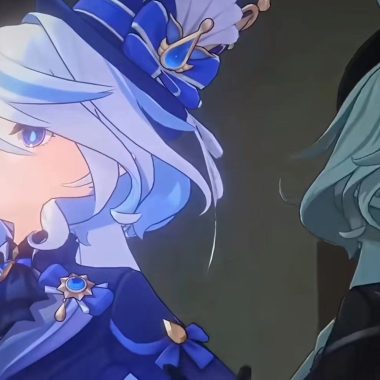From the Abyss’ wandering swordsman to playable warrior: Skirk, Childe’s enigmatic mentor, finally arrives in Genshin Impact 4.6!

Who is Skirk in Genshin Impact? Childe’s Master & Her Role in Fontaine
Skirk is a lone survivor of the Cataclysm of Khaenri’ah. In the aftermath of the disaster, she was rescued by one of the “Five Harbingers of Sin”—either “The Foul” Surtalogi (also known as the “Extreme Evil Rider”) or “The Soothsayer” Visserfarnir (Dainsleif’s elder brother), or possibly both. Under Surtalogi’s guardianship and rigorous training, Skirk mastered extraordinary combat skills, inheriting the legacy of the Abyss.
As fate would have it, Skirk later saved another child similarly bound by destiny—“Childe” Tartaglia, who would grow to become the 11th of the Fatui Harbingers. She became his mentor, forging a bond mirroring her own past. During Fontaine’s prophecy crisis, Childe confronted the All-Devouring Narwhal, a creature intrinsically tied to his fate. It was in these events that players finally encountered Skirk for the first time.

Skirk’s Enigmatic Origins: Khaenri’ah’s Reflection & The Seven-Shifting Serpent
Skirk’s character profile background stands as the most unique among all currently playable characters, signifying her detachment from any of Teyvat’s seven nations. In truth, this background doesn’t wholly represent Khaenri’ah either. When compared with Dainsleif’s character card, it becomes apparent that Skirk’s background appears as a distorted reflection of Khaenri’ah’s – like an image in a shattered mirror. The abyssal starry void in her backdrop further confirms that the cognition and power she represents have “transcended this world.”
Notably, while Skirk’s elemental attribute remains “Cryo” (one of the seven standard elements), she possesses no Vision. Instead, she wields a newly introduced power system called “The Seven-Shifting Serpent.” This suggests that her abilities may not derive from conventional elemental energy, but rather from an “extraterrestrial force” (possibly Void energy) that merely manifests as Cryo. Alternatively, it might function similarly to the “Dragon Sovereign’s Authority,” representing another pathway to harness elemental power. The exact nature of this mechanism awaits clarification through her official release and related storyline developments.
The serpent motif has appeared twice among known Khaenri’ah-related characters. As fans will recall, Dainsleif’s constellation is named “Snake Ring Constellation.” These serpentine elements likely connect to Ouroboros (Ancient Greek: Oὐροβόρος), the tail-devouring serpent symbolizing infinity – a concept previously mentioned in Enkanomiya’s lore with the phrase “The world was originally like a chicken egg, where dragons and serpents were one.” Considering Khaenri’ah’s cultural inspirations, the serpent symbolism probably also relates to Jörmungandr, the World Serpent from Norse mythology.
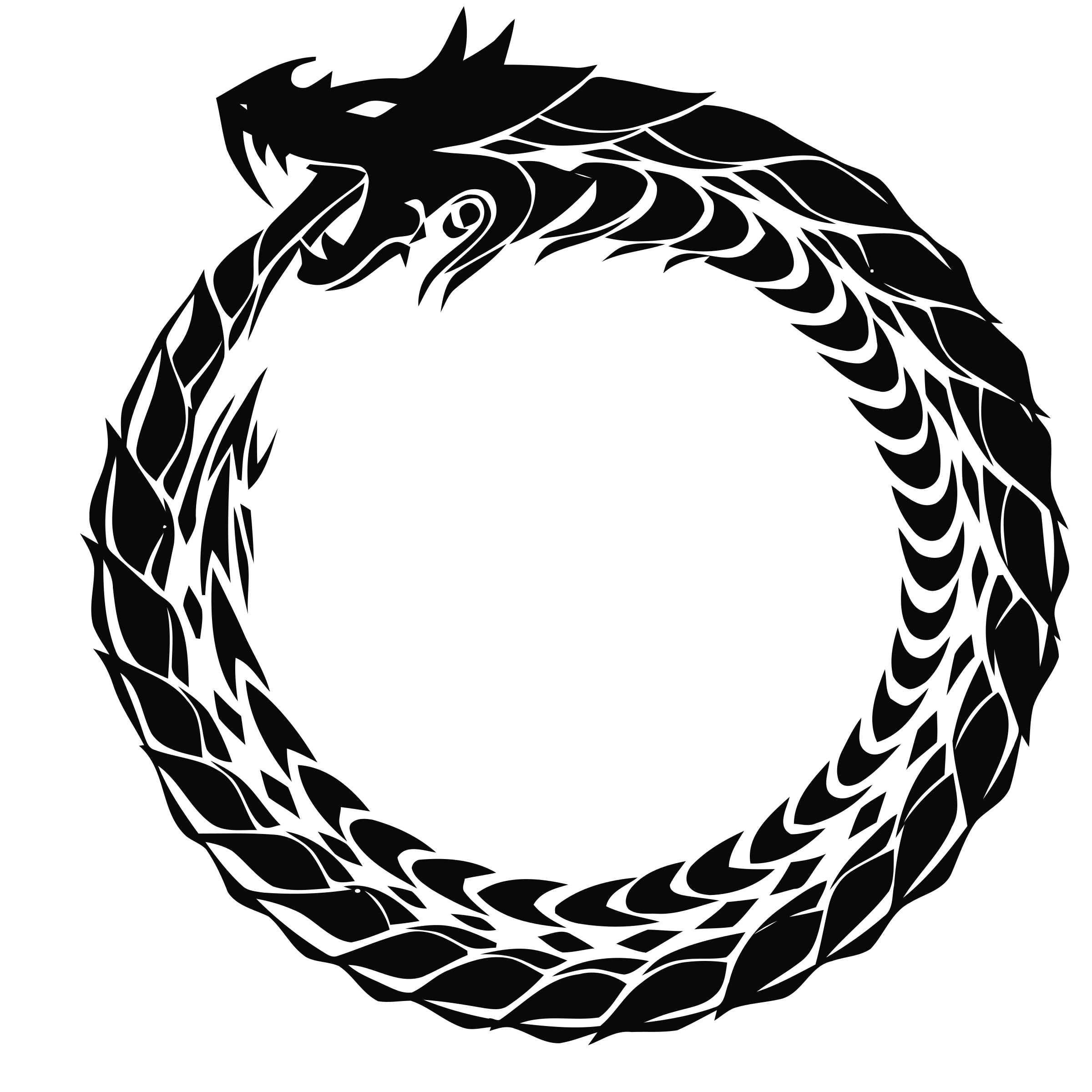
Skirk’s Etymological Origins: Between Norse Skær and Celtic Scáthach
The name “Skirk” potentially originates from Old Norse “Skær” (where æ sounds similar to “i,” approximating the pronunciation “Si-gaar”). As the nominalized form of the adjective “Skærr,” it signifies “glimmer” or “radiance” – particularly describing faint celestial light. This aligns exquisitely with Skirk’s epithet “Void Star” and Tartaglia’s character profile description of her as “the solitary maiden dwelling in the universe’s deepest darkness.” The imagery of “a star’s faint glimmer amidst the cosmic void” thus serves as a profound representation of her character essence.

An alternative interpretation connects “Skirk” to Celtic culture. A township named Skirk exists in Ireland, rendered in Irish Gaelic as “Scadharc” – etymologically decomposable into “Scáth” (shadow) + “derc” (mirror). This linguistic construction forges a direct mythological link to Scáthach, the queen of the Celtic underworld “Dún Scáith” (Fortress of Shadows), better known to modern audiences by her Anglicized name “Scáthach.”
In Celtic mythology, Scáthach reigns as a warlike valkyrie figure, revered as a patron deity of warriors. Renowned for her mastery of martial arts and arcane knowledge, she achieved legendary status as the mentor who trained countless heroes – most notably the demigod Cú Chulainn, the “Hound of Ulster.” The divine spear Gáe Bolg, Cú Chulainn’s signature weapon, was itself a gift from Scáthach.

In later artistic interpretations across various media, Scáthach is consistently portrayed as a statuesque beauty with pale complexion, clad in battle attire, her eyes harboring flickering flames – a depiction that finds perfect correspondence with Skirk’s in-game visual design. This archetypal representation remarkably aligns with Skirk’s narrative role as Tartaglia’s combat mentor (interestingly enough, Skirk’s Japanese voice actress is none other than Mamiko Noto, who also voices Scáthach in Fate/Grand Order).
Some might question this connection, given Khaenri’ah’s distinct Norse mythological influences – how could a character so intrinsically tied to Khaenri’ah draw from Celtic roots instead? From a cultural phylogenetics perspective, Celtic mythology’s Scáthach and Norse mythology’s winter goddess Skaði (Old Norse: Skaði) share proto-Indo-European origins as “deities of shadow.” This syncretism is explicitly acknowledged in Fate/Grand Order through the hybrid character “Scáthach-Skaði” (Scáthach≒Skaði), embodying their mythological convergence.
Hyperborea’s Echo: How the ‘Chorus of the Deep’ Artifacts Reveal Skirk’s Cosmic Mission
The Significance of Version 5.5’s Artifact Set “Chorus of the Deep” to Skirk
The narrative premise of this pivotal artifact set revolves around Skirk following guidance from her master Surtalogi—one of Khaenri’ah’s “Five Harbingers of Sin”—to Hyperborea, the lost “Golden Kingdom” at the edge of the polar ice seas. Within snow-entombed ruins, she uncovered one of Teyvat’s most consequential historical secrets. Notably, Skirk’s feather-shaped hair ornament bears striking resemblance to the set’s Plume of Death artifact, “Distant Promise of the Corridor.”

“Chorus of the Deep” Artifact Set Lore Summary:
In primordial times when divine edicts still permeated the land, an extraterrestrial traveler—strongly implied to be the “Third Descendant”—projected consciousness through Teyvat’s protective “shell,” inhabiting an unnamed northern youth. This voyager, a member of an ultra-advanced cosmic civilization, had visited Teyvat before Phanes’ invasion and forged a pact with the planet’s primordial dragon Nibelung. The youth later moved the first angel’s heart, becoming their consort, and together they raised the banner of rebellion against the Heavenly Principles in the northern golden city, vowing to liberate mortals from celestial shackles and restore their path to the stars.
Their revolution failed catastrophically. The golden metropolis was annihilated by a Celestial Nail in a single night. The archangel was stripped of name and form, while their entire kind suffered demotion—punished by a wrathful Celestia with the cruel decree: “Gaze not upon the sky, nor love humankind.” Their glorious race gradually deteriorated into the hollow “Seelie” now found across Teyvat, who still instinctively guide humanity despite their diminished state.
Connections to Fontaine’s Archon Quest:
At the climax of Version 4.2’s storyline, Skirk revealed the bombshell truth that “Gnoses are crafted from the Third Descendant’s remains.” If the Hyperborean traveler is indeed this Third Descendant, her characterization of Gnoses as “ill-omened objects” and her cryptic statement—”Life is inherently a blessing. But death transforms all connections into curses”—gain profound new meaning.

Additional Context from “Moonlit Song” Event:
The upcoming nation of Natlan will introduce the “Frostborn Children” as a major faction—confirmed descendants of Hyperborea. Recent Natlan previews explicitly linked them to Celtic druidic traditions, further reinforcing Skirk’s Celtic mythological connections established earlier.

From Ajax to Childe: The Prophetic Parallels in Skirk’s Apprenticeship
No discussion of Skirk would be complete without mentioning her most famous pupil—our old friend, the Eleventh Harbinger Tartaglia. The concept of Hyperborea first appeared in the battle pass weapon “Fjord’s Hymn,” which recounts the legend of the young hero Ajax who discovered the “Kingdom of Gold and White Stone.” Coincidentally, Tartaglia’s true name is Ajax—though he isn’t the legendary figure himself, but rather named so by his father who was enamored with the heroic tales (as revealed in Tartaglia’s Character Story III).
As if bound by fate, much like the storied Ajax who chanced upon an ancient kingdom, young Tartaglia would eventually encounter his own extraordinary adventure (Character Story IV). At fourteen, weary of his mundane existence, he ran away from home only to plunge into the depths of the Abyss. Amidst the ruins of a forgotten civilization, the boy met the enigmatic swordswoman Skirk. In those three months that passed in the Abyss—while merely three days elapsed in the outside world—Skirk imparted all her hard-earned techniques for navigating the void, simultaneously awakening the boy’s innate propensity for endless conflict. This pivotal experience would irrevocably alter the course of Tartaglia’s life.
What emerges is an intricately interconnected web of lore. For Skirk, taking young Ajax as her apprentice must have felt like history repeating itself—just as she was once rescued from death’s door by her own master on scorched earth and taught to defy fate, now she perpetuates this harsh yet tender legacy. When the Soothsayer first informed the Foul Rider that prophecy foretold he would soon gain a disciple, the latter responded: “What? I’m to have a student? That’s… unfortunate news. For the poor soul who hasn’t even met me yet.” One imagines Skirk harbored similar sentiments when accepting her own pupil.
After all… becoming her apprentice was never meant to be easy.
Celestial Apocalypse: Decoding Teyvat’s Cosmic Doom Foreshadowing
Finally, let’s touch on the “Prophet” and the “Extreme Evil Rider’s” mention of “sin staining the heavens, calamity spreading across the entire universe.” This has actually been hinted at in earlier game lore. For example, the significant book The Little Witch and the Unquenchable Fire, released alongside the “Fantasy True Realm Poetic Drama” update, references the ominous state of the universe beyond Teyvat: a cosmic-level catastrophe is spreading, and everything outside seems to be heading toward a desolate end under the influence of something. Stars and civilizations in the universe are extinguishing at an accelerated rate, vanishing without a trace.
In fact, the Narwhal’s true purpose in devouring worlds is not destruction. According to the Archon Quest commemorative item “Tear of Interstellar”, this colossal whale once traversed lightless starry seas, roamed countless worlds, and was even revered as a deity in some. Despite its actions being undeniably destructive in outcome, its inner motives are surprisingly pure—even benevolent (though this benevolence transcends conventional understanding). It weeps endlessly over the inevitable decline of civilizations and chooses to devour them, seeking only to preserve all that should not fade away. This way, even when the end of time arrives, a new world may be reborn within its belly.
